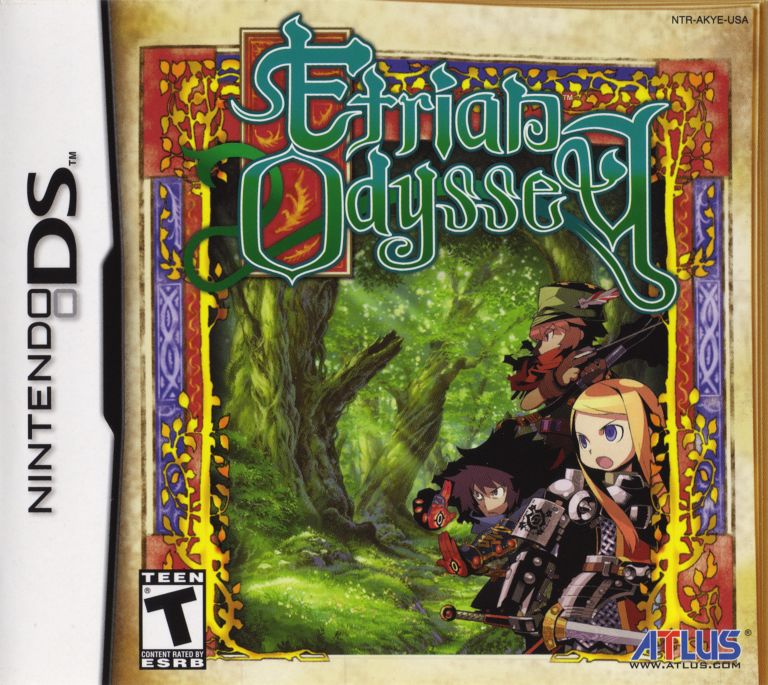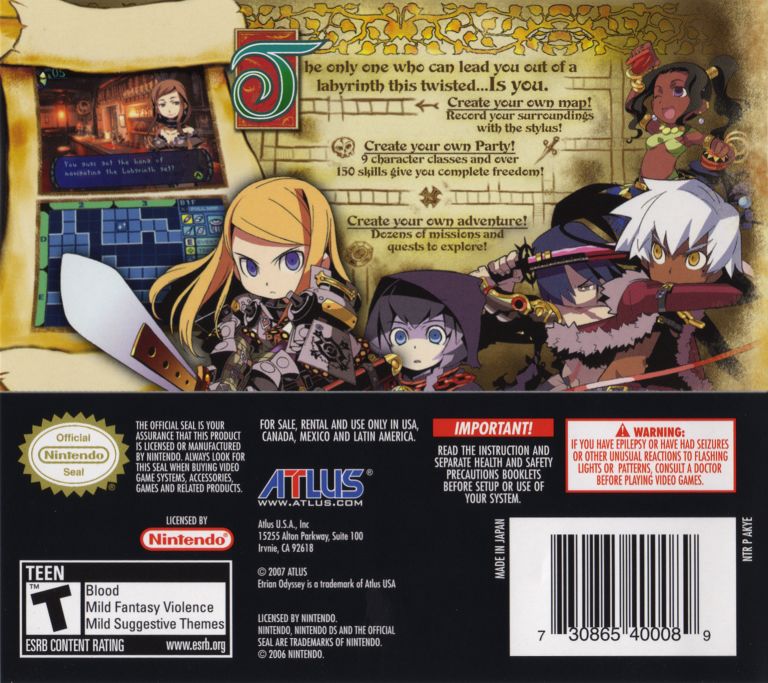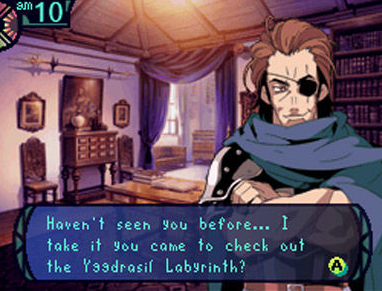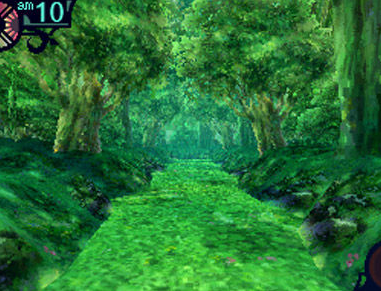Far away in a vast fertile land lies a small town called Etria. Peaceful and serene, Etria became famous when a labyrinth was discovered at the edge of its woods. Those who heard of the labyrinth began to harbor dreams of exploring it. And so, many explorers from all over the world flocked to Etria in dream of achieving wealth, fame, and fortune exploring the vast and mysterious labyrinth.
Etrian Odyssey is a first-person role-playing game (RPG) which pits the player as an eager adventurer ready to face the dangers of the labyrinth. At the beginning of the game the player is required to create an own adventuring guild by creating various characters out of nine different classes. The player may create as many as characters as the player wants, but everything costs money, so strategic thinking is a must. Also, the player can only take a party of five characters into the labyrinth, so the remaining characters have to stay in town at the guild hall.
Battles are done in the traditional turn-based style and the game contains over 125 monsters that guard the labyrinth and the area around it. Movement is done one step at a time, with players moving in restricted directions (forward, back, left, right). Most of the game is focused on exploring deeper and deeper into the labyrinth while still returning to town in order to restock and resupply. During the return trips to town, the player may also switch out characters in the party if a special class is needed to pass obstacles in the labyrinth. Also, the player is only allowed to save during the return trip to town, making trips to the labyrinth both risky and exciting.
The labyrinth is completely unknown and unexplored. One of the important features of the game is the necessity to draw own maps. The top screen of the DS shows the action, while the bottom screen shows a gridded area. In this area, the player has to use the stylus to draw out all of the maps. This means not only marking where the walls and doors are, but having to mark where enemies, treasures, special areas, and staircases are. It is completely up to the player how accurately or haphazardly the player wants to draw the map. However, the only way to get out of the labyrinth is to return to the start, so gameplay becomes even riskier the further the player ventures into the dungeon. Managing maps poorly may risk the party’s lives. Map making is a key concept of this game because it emphasizes adventuring into the unknown and finding out what’s around the very next corner.
Cover Art:
Screenshots:





